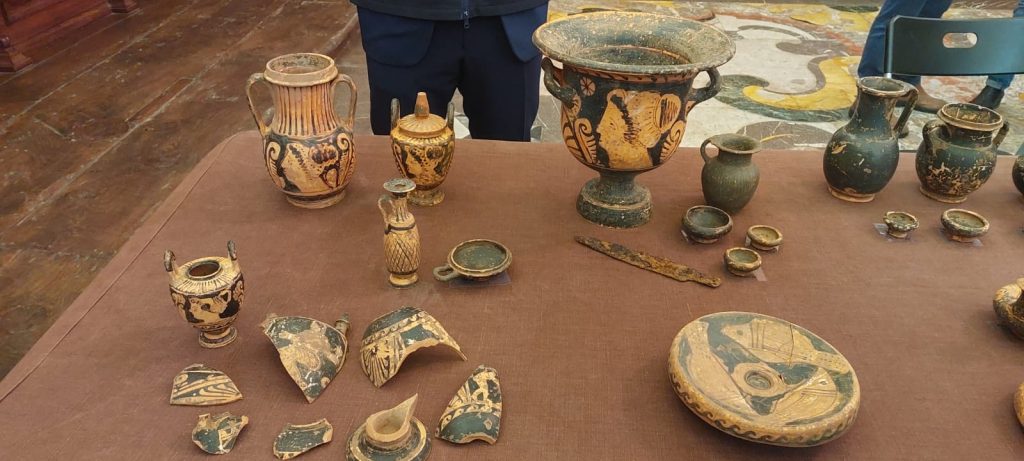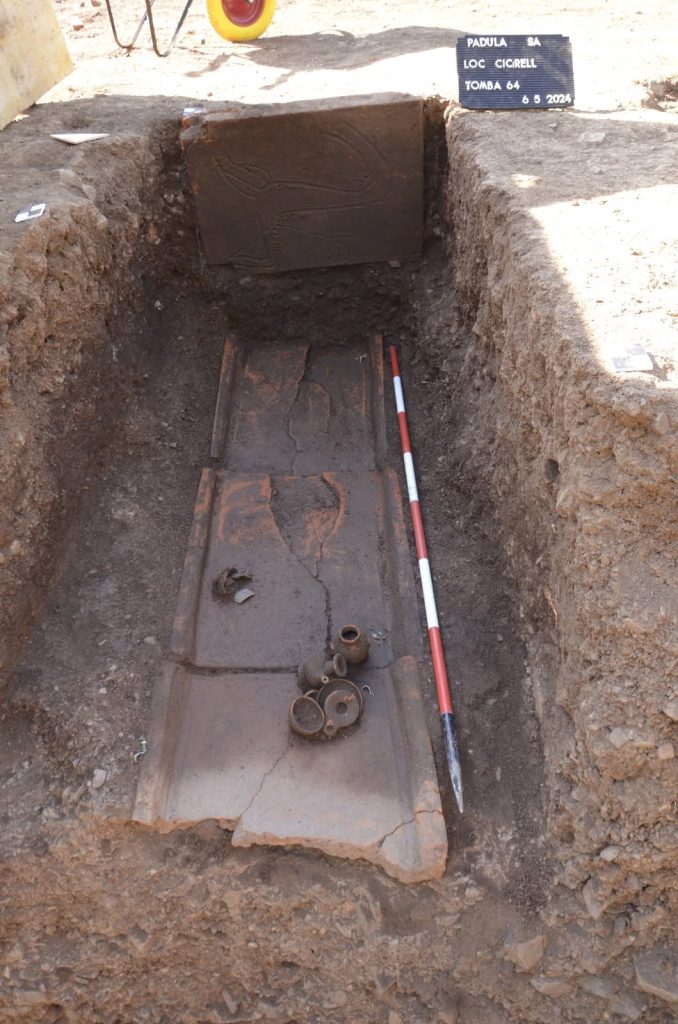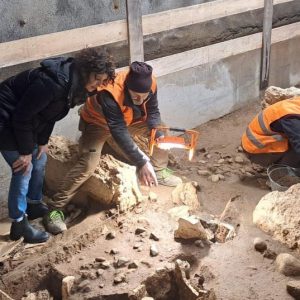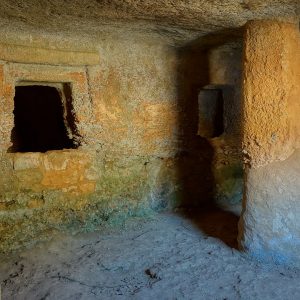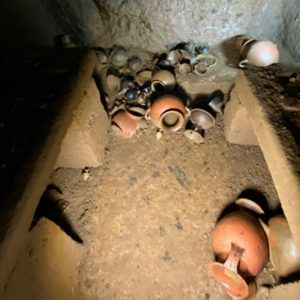On 5 February, officials announced the discovery of an ancient burial site in Padula, Campania. The find includes 19 tombs dating back to the 4th century BC, one of which is believed to belong to a warrior.
The tombs were uncovered during an investigation into illegal construction in the Cicirelli district, which led to severe damage to the archaeological site.
The Superintendency of Archaeology, Fine Arts and Landscape of Salerno and Avellino, the Lagonegro Public Prosecutor’s Office, and the Carabinieri of the Cultural Heritage Protection Unit held a press conference at the Certosa di San Lorenzo in Padula to present the findings.
Illegal Construction Leads to Major Archaeological Discovery
Last summer, authorities received reports of construction work on private land in the Cicirelli district. Investigations revealed that the works, intended to build a stable, were carried out illegally. As a result, the workers destroyed part of an ancient burial site.
Law enforcement officers immediately seized the area, halting all construction, and archaeologists launched an emergency excavation to recover and preserve the tombs.
4th Century BC Burials and Artefacts
The 19 tombs, constructed in a Capuchin style, have tile-lined beds and sloping tile roofs. In some cases, bodies went directly into the ground, marked by large stones. Archaeologists also uncovered numerous grave goods, including black-glazed ceramics and red-figure vases featuring female heads.
These artefacts are thought to come from Lucanian workshops, likely located in the Vallo di Diano area. Some vases were found outside the tombs, indicating their use in burial rituals.
Tomb 64: A Warrior’s Final Resting Place?
One of the most significant discoveries is Tomb 64, which contained several black-glazed vases and an achromatic urn. Inside the urn, archaeologists found a silver diobol coin from the Taranto mint, dating between 380 and 325 BC. The coin depicts the goddess Athena on one side and Heracles strangling the Nemean lion on the other.
Notably, one of the tomb’s covering tiles features an engraved image of a horseman, drawn before firing of the tile. The rider, wearing a helmet, appears to be throwing a spear. This suggests the deceased was a warrior of high status within his community.
Another grave contained an iron knife, a bronze belt worn at the time of burial, a krater used in symposiums, and household items such as firedogs and a lead candelabrum. The combination of weapons and domestic artefacts suggests the deceased was not only a warrior but also an important figure in family and social life.
Experts believe the tombs in the Cicirelli district may relate to a nearby settlement or farm from the same period. The layout and artifacts suggest an established community, and further excavations may provide deeper insights into the lives of those buried there.


